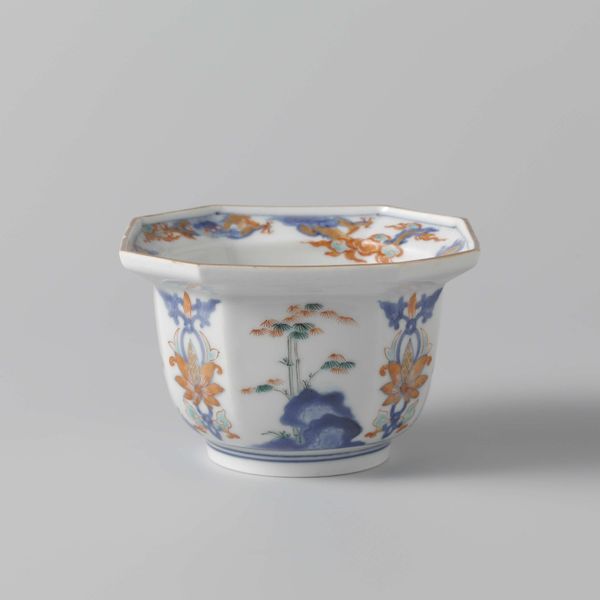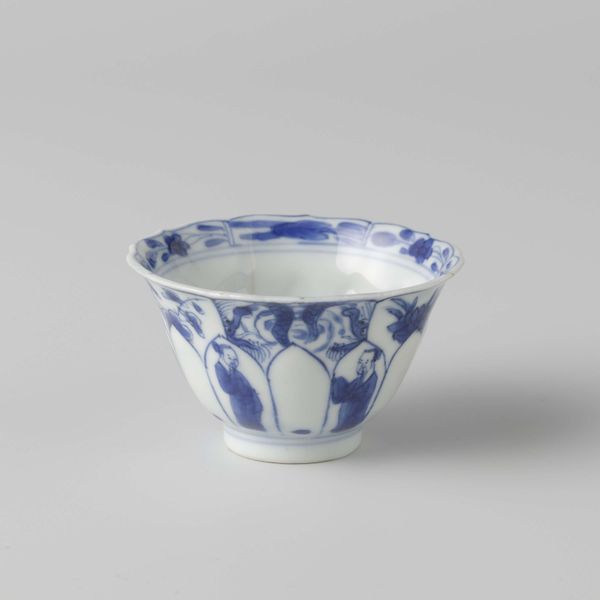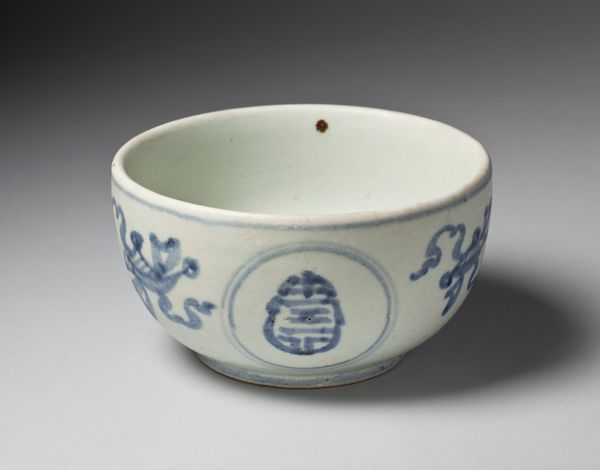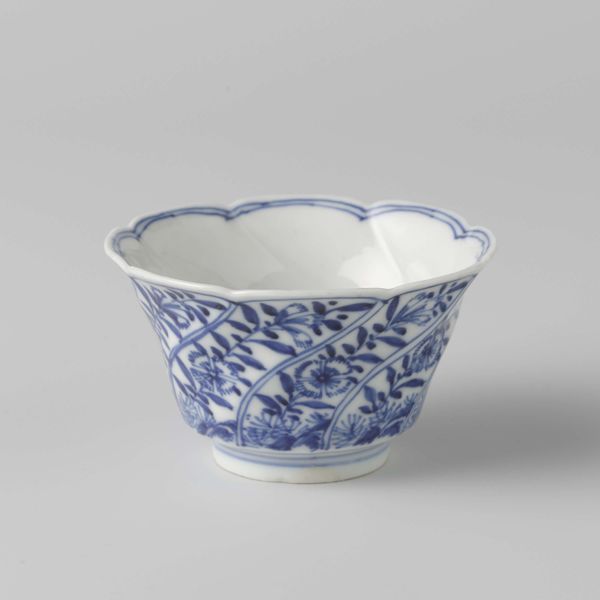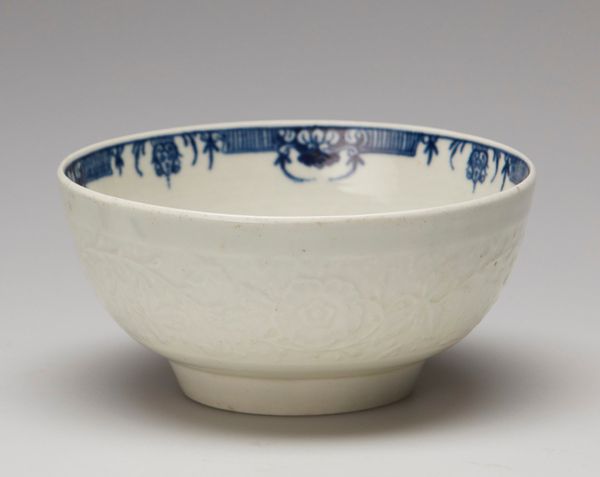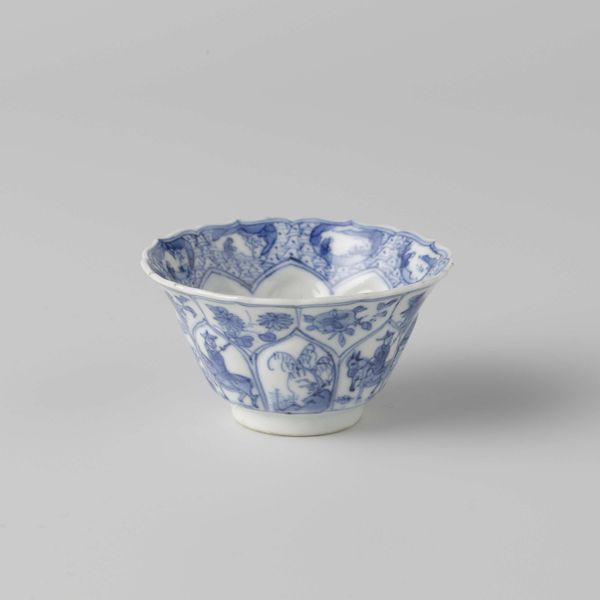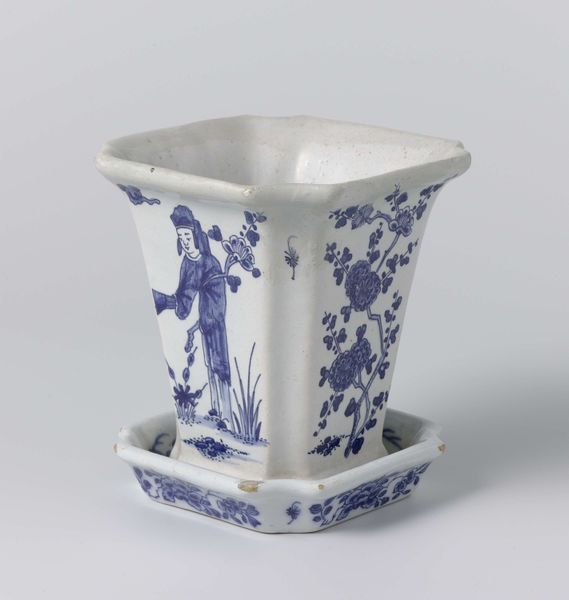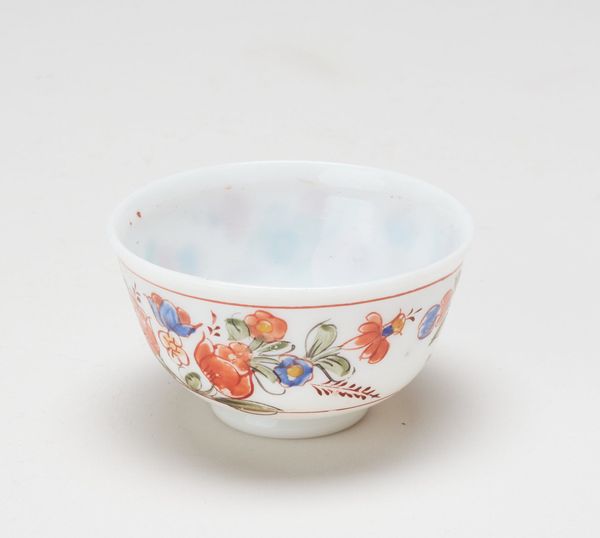
ceramic
#
asian-art
#
ceramic
#
ceramic
#
genre-painting
#
decorative-art
Dimensions: height 3.9 cm, diameter 6.7 cm, diameter 2.7 cm
Copyright: Rijks Museum: Open Domain
Curator: Welcome to the Rijksmuseum. We're standing before an exquisite piece of ceramic ware dating back to around 1680-1720: a cup with flaring sides, decorated with a delicate cobalt blue illustration. It's known as "Cup with flaring sides with a woman and boy near a rock." Editor: It strikes me immediately as something very intimate. The cup itself implies personal use, and the scene depicted feels peaceful, domestic even. The blue against the white is so clean, it gives it a very serene mood. Curator: Absolutely. The technique is quite indicative of its period; such blue-and-white porcelain ware became highly desirable. Note the soft brushstrokes, illustrating a scene depicting a woman with a boy, situated by what looks like a decorative rock or perhaps a small hill. These depictions can often allude to societal values, class, and status. Editor: Right, and beyond aesthetics, it brings up interesting questions about who had access to such an object, what kind of exchange networks made this kind of art and style possible, and also what roles are being depicted here in gender relations, or familial values. The scene feels idyllic, almost like a carefully staged moment of tenderness that perpetuates specific narratives. Curator: These cups, likely intended for tea or wine, were undoubtedly part of a ritual, or perhaps a performance of status. They highlight the growing market for what was essentially luxury goods, and how art became deeply interwoven with social practices. We see this with a rise of Dutch East India company and other companies at that time. Editor: And perhaps the idyllic scene on the cup could be interpreted, during this period, in relation to its impact. When the social realities that surround such artistry are frequently violent, and how art can distract the realities to specific historical powers, colonialism or inequality that might sustain its very production. Curator: It gives pause to consider the object within the system. Well, thank you, this close look gives this cup a larger appreciation. Editor: It also forces us to recognize those critical silences, inviting ongoing conversations and actions for justice.
Comments
No comments
Be the first to comment and join the conversation on the ultimate creative platform.


